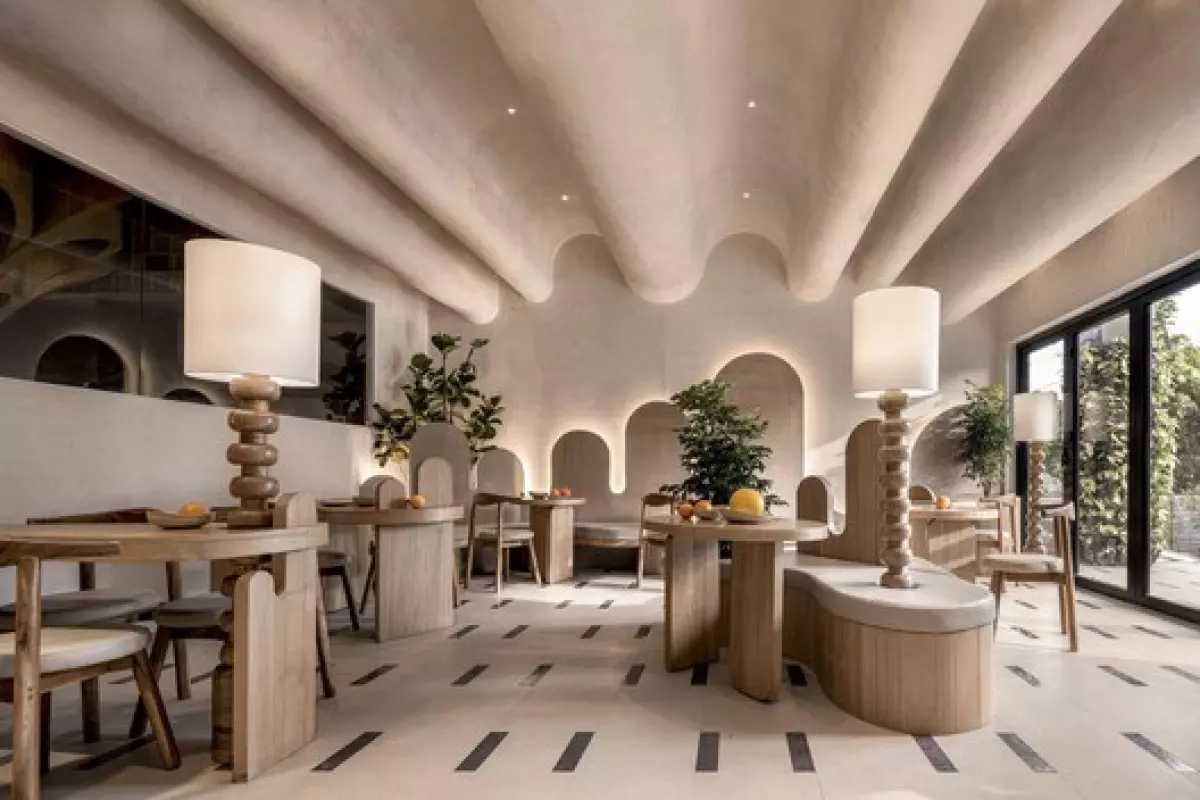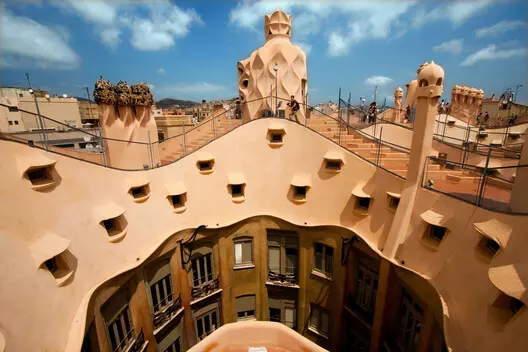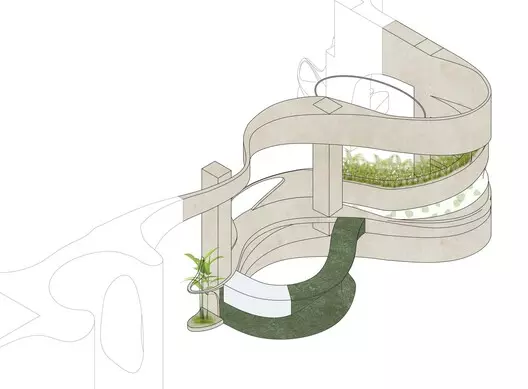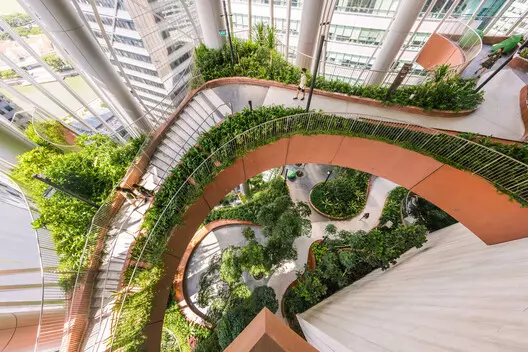Interior design has always been an exciting field for architects and designers. As we spend more time indoors, the importance of creating functional, comfortable, and aesthetically pleasing spaces has never been more apparent. Design trends are constantly evolving, influenced by various factors, including lifestyle changes and societal shifts. One particular trend that has taken the interior design world by storm is the use of curved silhouettes.
 Myfresh Café / LOOP Design Studio. Image © Purnesh Dev Nikhanj.
Myfresh Café / LOOP Design Studio. Image © Purnesh Dev Nikhanj.
What may seem like a contemporary trend actually has deep historical roots. Architects have drawn inspiration from nature for centuries, finding beauty in the asymmetrical lines of flowers and animals. One of the most prominent examples of this is the Art Nouveau movement, characterized by organic forms, asymmetrical lines, and the use of natural materials. This movement celebrated craftsmanship and originality, deviating from the structured and linear designs of the time.
 AD Classics: Casa Milà / Antoni Gaudí. Image © Gideon Jones.
AD Classics: Casa Milà / Antoni Gaudí. Image © Gideon Jones.
In today's world, the use of curved silhouettes in interior design goes beyond just a passing trend. Architects and designers now prioritize the physical, mental, and emotional well-being of users. By incorporating biophilic design principles, which connect us with nature, interior spaces have become havens of calmness and optimism. Elements such as greenery, natural materials, and nature-inspired color palettes blur the boundaries between man-made structures and the natural environment, resulting in free-flowing designs that promote a sense of escapism.
Contrary to popular belief, humans are inherently drawn to curved visual objects. In a recent study, participants overwhelmingly preferred curved objects over linear ones. Looking at curves triggers an emotional response and activates the anterior cingulate cortex in our brains, which is associated with emotions. Curves are often seen as non-threatening and create a sense of ease and comfort.
 Interaction - BWM Office / feeling Design. Image © He Yuansheng.
Interaction - BWM Office / feeling Design. Image © He Yuansheng.
Given the impact of culture, context, and global events on design perception, it's clear that curves are here to stay. Neotenic designs, characterized by voluminous and playful silhouettes, are gaining popularity. Beyond aesthetics, curves also enhance safety, especially in kids' architecture where rounded edges reduce the risk of injuries.
Let's explore how architects have embraced curves in their interior designs through 28 inspiring projects:
Walls & Partitions
- Ulupinar Textile Headquarters Showroom / Zemberek Design
- Sadhu Vegetarian Restaurant / Adrei Studio
- Interaction - BWM Office / feeling Design
Decorative Walls
- KOPI Jewellery Boutique / NOKE Architects
- CHEE-SE Restaurant / KSOUL Studio
- Green Cloud House / Jiejie Studio
Ceilings
Platforms & Staircases
- B:Hive Offices / BVN + Jasmax
- CapitaSpring / BIG + Carlo Ratti Associati
- Je Beijing Restaurant / FUNUN LAB
Furniture & Fit-outs
- SHOP NO. 851 / Studio Ardete
- Haight Clothing Store / AIA Estúdio + Raphael Tepedino
- Canning Street House / Foomann Architects
- The Garden Pavilion / NCDA
- "Practice in City" KnowYourself Store / Mur Mur Lab
Lighting
- reMarkable Pop Up Store / Snøhetta
- My Oh My Espresso Café / We Are Humble
- CHEE-SE Restaurant / KSOUL Studio
Decorative Elements
Kids Architecture
- Big and Tiny Silverlake Playground / Zooco Estudio
- NUBO Kindergarten / PAL Design
- Animal Adventure Island / Fenhom·URO
Interior Architecture & Structure
- Shuran Wellness Space+ Shuran Skincare / E Studio
- V+ Lounge by the West Lake / LYCS Architecture + Studio Waffles
- AD Classics: Bagsværd Church / Jørn Utzon
 Tienda Breathe / Masquespacio. Image © Mateo Soto.
Tienda Breathe / Masquespacio. Image © Mateo Soto.
These projects showcase the versatility and beauty of curved elements in interior design. From walls and ceilings to furniture and lighting, architects and designers are pushing boundaries and creating spaces that are visually captivating and emotionally inviting.
Curved designs evoke a sense of harmony and balance, making them a popular choice among designers and users alike. As the world continues to embrace the curvaceous trend, we can expect to see more innovative and inspiring interior spaces.
This article is part of an ArchDaily series that explores features of interior architecture. If you have any suggestions or ideas, please submit them as we value our readers' input.
















